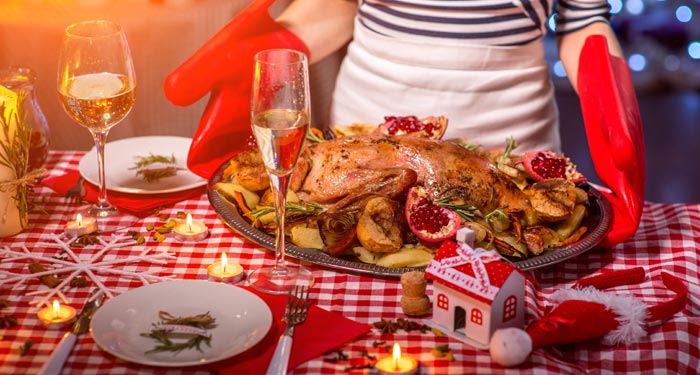First post of four in a series on home safety.

For many of us, December means gathering together to celebrate, count blessings, participate in sacred traditions, and of course, usher in another year. There’s a hustle. There’s bustle. And in the midst of all our holiday preparations and celebrations, home safety can slip off our mental radar screens. From unwatched burning candles to unsafe levels of carbon monoxide, home danger can quickly transform holiday joy into needless tragedy. Here are some tips to help prevent dangerous situations in your home.
How can you prevent carbon monoxide poisoning?
Installing a battery-operated or hard-wired carbon monoxide detector in your home should be your first priority says the National Safety Council, which offers the following related tips:
1. Have your heating system, water heater, and any other gas- or coal-burning appliances serviced by a qualified technician every year. Standard Heating can help you with this task. A tune-up includes a carbon monoxide test, to make sure your furnace is safe to run.
2. Do not use portable flameless chemical heaters indoors.
3. Never use a generator inside your home, basement, or garage or closer than 20 feet from any window, door, or vent.
4. Have your chimney checked and cleaned every year.
5. Make sure your gas appliances are vented properly.
The National Fire Protection Association offers these additional safety tips:
6. During and after a snowstorm, make sure vents for the dryer, furnace, stove, and fireplace are clear of snow buildup.
7. If you need to warm a vehicle, remove it from the garage immediately after starting it. Do not run a vehicle or other fueled engine or motor indoors, even if the garage doors are open.
8. Make sure the exhaust pipe of a running vehicle is not covered with snow. Keep a shovel in your car in case you get stuck and need to clean your exhaust pipe while waiting for help.
9. Gas or charcoal grills also can produce carbon monoxide – only use outside (Sorry, but this means grilling in your garage also is a bad idea!).
What is the “Invisible Killer”?
To kick off this home safety series, we’ll begin with a look at a silent and deadly threat: carbon monoxide poisoning. “Often called the invisible killer, carbon monoxide is an odorless, colorless gas created when fuels (such as gasoline, wood, coal, natural gas, propane, oil, and methane) burn incompletely. In the home, heating and cooking equipment that burn fuel can be sources of carbon monoxide,” notes the National Fire Protection Association NFPA website.
The state of Minnesota Department of Public Safety (DPS) website details the Minnesota Statute governing carbon monoxide safety, including the requirement that all single-family homes and multifamily apartment units include approved carbon monoxide alarms. The statute also requires that carbon monoxide alarms “must be certified by a nationally recognized testing laboratory that conforms to the latest Underwriters Laboratories (U/L) Standards, known as UL.” See the DPS website for complete details.
Hundreds of deaths are attributed to carbon monoxide poisoning each year, with thousands more hospitalized (source: Centers for Disease Control and Prevention). Carbon monoxide poisoning also causes neurological damage. What makes it particularly deadly is the inability of people to detect its presence.
According to the U.S. Fire Administration, low levels of carbon monoxide poisoning can cause symptoms similar to those of the flu or a cold: headache, fatigue, shortness of breath, nausea, and dizziness. High levels of carbon monoxide exposure result in mental confusion, vomiting, loss of muscular coordination, loss of consciousness, and death.
NOTE: It’s important to realize that most carbon monoxide detectors only sound off when CO levels reach dangerously high levels. If you or someone in your home is experiencing ongoing flu-like health problems, your home may contain a consistently low (but still dangerous) level of carbon monoxide and must be measured with professional instruments.

